The 13 Best Boxed Sets of 2022
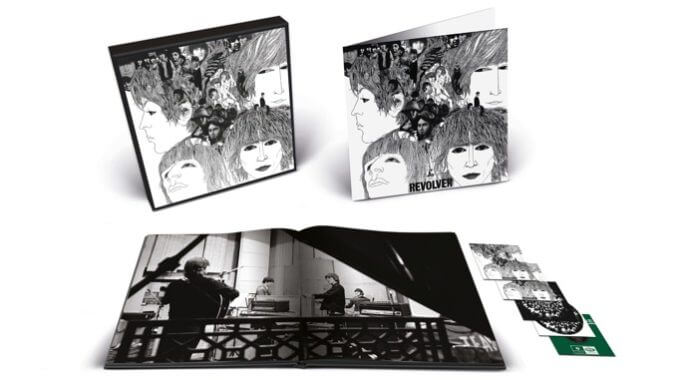
As the holiday season comes to a close and you’re wondering what to do with those gift cards or that refund from that ugly sweater, we’ve got you covered. Here are some of the best boxed sets of 2022—compilations of music dug up from the archives and lovingly repackaged to create something special.
ABBA: Vinyl Album Box Set (Polar)
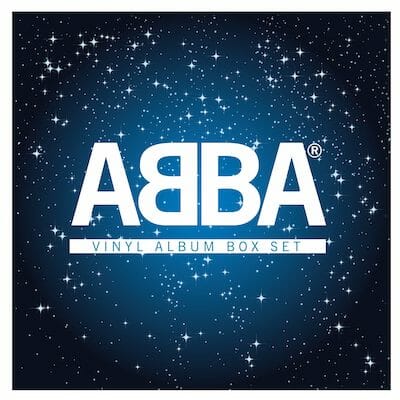
Record collectors know how plentiful ABBA vinyl is on the secondary market. You don’t sell an estimated 400 million copies of your albums without a few of them ending up in the used bins at record shops or at garage sales and thrift shops. Why then consider dropping a healthy amount of coin on a hulking set containing new vinyl pressing of the Swedish pop titan’s discography up to and including their 2021 reunion album Voyage? Honestly, there’s plenty to tip the needle into the affirmative. The final disc in the set is Tracks, a collection of fantastic non-album tracks, like the very recognizable singles “Gimme Gimme Gimme” and “Fernando” and the underrated “Happy Hawaii.” There’s era-appropriate reproduction inner sleeves for the band’s debut and 1974’s Waterloo. And the pressings sound great, even with the abundance of paper scuffs on each copy. Besides, for the folks who are just now coming to appreciate the brilliance of ABBA’s music, what better way to snap up nearly every note the quartet recorded during their illustrious career? —Robert Ham
The Beach Boys: Sail On Sailor
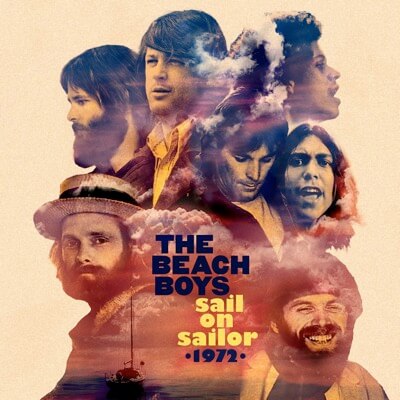
By 1972, the thread tethering Brian Wilson to both the band he started and his sanity was starting to unravel. So, as with other post-Pet Sounds albums by the Beach Boys, the rest of the group started stepping up to contribute material leading to a fascinating series of flawed releases like Carl and the Passions and Holland, the two LPs that are the core of this recent boxed set. The full package is a dense core sample that draws out the deep layers of the production process including various a cappella takes, rough takes on album material and bare bones instrumentals that are as dynamic and daring as prog rock. Tucked at the center are two discs of the Beach Boys performing at Carnegie Hall. The document is further evidence of how fierce the group could be in concert as they thickened the sound of fan favorites like “Don’t Worry, Baby” and “Help Me, Rhonda” and dared to toss deep cuts (“Student Demonstration Time,” “California Saga”) to the New York wolves. —Robert Ham
The Beatles: Revolver
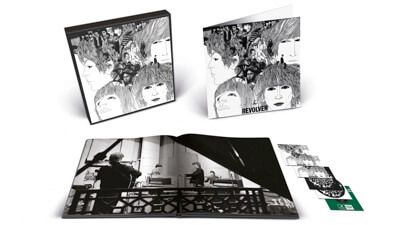
At some point in the future, the well will truly be dry and the barrel completely scraped, but while we march toward that sad day, let us continue to rejoice in the wonderful work being done to tell the even more complete story of the Beatles discography. The latest chapter is the new edition of Revolver, a turning point album that found psychedelia taking hold of the Fab Four and the possibilities of multi-track recording opening up to them. The new mix from Giles Martin is breathtaking on its own, but the astonishments continue through the work tapes and early takes that reveals the group’s machinations and judicious editing. If nothing else comes out of this multi-disc treasure trove, at least the “actual speed” version of “Rain” might finally put to rest any further griping about Ringo’s abilities as a drummer. It, like the rest of the album, is a blueprint for future generations of power pop artists to pore over and crib from. —Robert Ham
Blondie: Against The Odds: 1974 – 1982
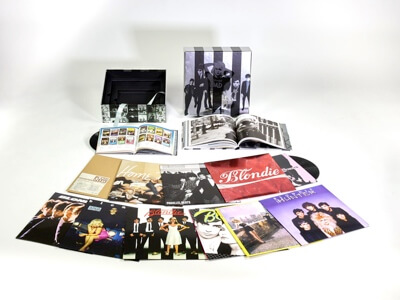
It’s hard to imagine now, but the term “punk” didn’t originally refer to a sound so much as an outlook. When the punk movement blossomed in Lower Manhattan in the early ’70s, bands as disparate as The Ramones, Television and Patti Smith were all unified by a commitment to creative independence. The scene they emerged from incubated the efforts of musicians who had little in common with the more stylistically uniform definition of punk that we think of today. Most notable among these were groups like Talking Heads, Tom Tom Club and, of course, Blondie—all of whom drew from art rock, disco, hip-hop, funk and reggae on their way to helping launch the New Wave genre. Blondie, in particular, crafted such slick, slinky pop hits—”Heart of Glass,” “Rapture,” “The Tide Is High,” etc.—that it’s hard to find a place for the iconic New York outfit within the anti-commercialist code of ethics their peers would come to represent. We certainly can’t fault anyone (especially people who didn’t live through the period) for locating Blondie right next to groups like The Cars and The Go-Go’s, whose musicianship is similarly easy to overlook in favor of their fizzy outer surface. But if you sit down with Blondie’s classic-era catalog from start to finish—six albums spanning their formation in 1974 to their breakup in 1982—you find a creatively restless unit who aren’t so easy to pigeonhole under the New Wave banner. If Blondie’s hits don’t exactly misrepresent them, the hits don’t tell the whole story, either. Moreover, it took Blondie about three albums for their sound to gel. Against the Odds, the first-ever Blondie box set, broadens our understanding of the band’s progression over time by giving us access to the first recording Blondie ever did, a basement session organized by journalist Alan Betrock, founder of the New York Rocker magazine. This ramshackle early session offers a crystal-clear glimpse of all the elements that made Blondie stand out from the start. While Blondie positively oozed cool, they never sacrificed substance in the pursuit of style and, in fact, cultivated a visual aesthetic with a great deal of craft. They’re one of those rare bands where image isn’t actually secondary to the art, but rather an essential component of it. Against The Odds captures that art in its totality. The sounds and images included here were lovingly curated from Chris Stein’s personal archive (including 100 tape reels), which sat in his barn in Woodstock, New York, for 20 years. Listeners should look before they leap to see how far they want to delve into the nitty gritty, but the attention to detail here is undeniable. As far as box sets go, Against the Odds is a textbook example of how to do justice to a band’s legacy. —Saby Reyes-Kulkarni
Charles Lloyd: Trio of Trios
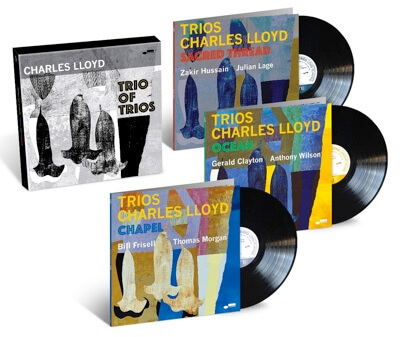
It would certainly be welcome if there were a box set that spanned the breadth of tenor saxophonist/flute player Charles Lloyd’s distinguished career. Aside from playing with jazz greats like Cannonball Adderly, Chico Hamilton and Les McCann, Lloyd is also known for playing with The Beach Boys, The Doors, Canned Heat and The Grateful Dead—to say nothing of his prodigious output as a leader dating back to his time as a rising power on the post-bop scene in the mid-’60s. To Lloyd and label Blue Note’s credit, however, this three-disc set remains anchored squarely in the present. At 84, the apparently tireless Lloyd released three albums in a four-month stretch this year, each showcasing Lloyd in a different three-piece configuration. The albums weren’t all recorded in the same year, but it speaks to Lloyd’s hunger to keep exploring. And though they were also released individually, the three titles were clearly envisioned as complementary pieces. On Chapel, Lloyd scales new heights of sublime with a gentle, reflective live set backed by guitarist Bill Frisell and bassist Thomas Morgan. Ocean, meanwhile, sees Lloyd in an intricate dance with the silken playing of pianist Gerald Clayton and guitarist Anthony Wilson. Finally, Sacred Thread captures Lloyd exploring his longstanding attraction to ancient Indian music with guitarist Julian Lage and percussionist Zakir Hussain. Where so many jazz greats lost some of their fire as they got older, Lloyd’s style was arguably suited to mature with age all along. Right from his debut as a leader in 1964, Lloyd possessed an exceptional sense of lyricism in his playing. Trio of Trios beautifully illustrates how that lyricism has only expanded and taken-on new dimensions—and that Lloyd is as vital a creative force as ever. —Saby Reyes-Kulkarni
David Bowie: Brilliant Adventure EP / Toy EP (Parlophone / ISO)
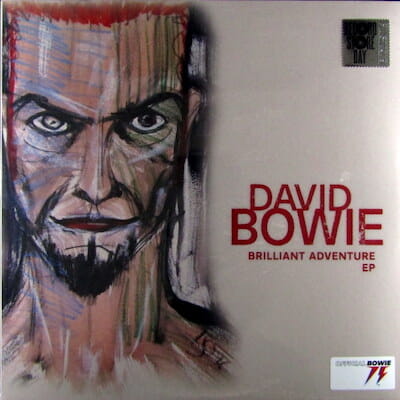
David Bowie’s ’90s were better than almost all other artists of his age as he embraced the sound and possibilities of electronic dance music, resulting in some of his most exhilarating and experimental work since the Berlin years. This era was covered almost completely by a pair of 2021 boxed sets, but true to form, the estate didn’t put absolutely everything in those collections, reserving a bit of material for these Record Store Day releases. The Brilliant Adventure EP is meant as a companion to the larger set of the same name, and includes alternate versions of two songs and a pair of live tracks recorded at a 1995 Shakespeare Festival. The Toy EP features six tracks from the previously unreleased album, also called Toy, an album where Bowie attempted to modernize the sound of his earliest work. These alternate versions and live takes ripple with momentum and have a sweaty bite courtesy of guest musicians like Helmet’s Page Hamilton and vocalist / violinist Lisa Germano. —Robert Ham
The Human League: The Virgin Years (UMC / EMI)
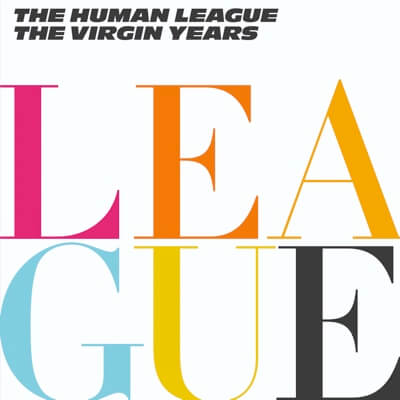
First, a somewhat minor quibble: in spite of this set’s title, this isn’t a complete collection of the work that synthpop band the Human League recorded for Richard Branson’s label. Prior to the group’s international success with 1981’s Dare, they recorded two full-lengths that had a much darker and more avant garde bent to them. Those are, for some reason, overlooked here. Instead, the material collected on The Virgin Years — five LPs, from Dare to 1990’s Romantic?, each pressed on colored vinyl — represents the ensemble’s commercial heights, like their U.S. #1 hits “Don’t You Want Me?” and “Human,” and their captivating yet uneven album Hysteria. Much as I’d love this to include Reproduction and Travelogue, this boxed set is a pure joy to dig into. The League had developed into a pop powerhouse with Dare and further developed their sound with some key assists by the production team of Jimmy Jam and Terry Lewis, and Rob Brydon, a.k.a. one half of Moloko. —Robert Ham
Laddio Bolocko: ’97-’99

It’s only a matter of time before we come around to re-discovering what a golden age the late ‘90s was for American underground (what was then referred-to as “indie”) rock. Not convinced? Sit down with this box and you might be singing a different tune. Even for aficionados of the larger scene Laddio Bolocko emerged from, the music on ’97-’99—two out-of-print LPs and an EP—hits like a strong gust of fresh air, still as rousing as it no doubt came across a quarter century ago. Combining saxophone, guitar, bass and drums with a confidence that verged on swashbuckling, Laddio Bolocko swam in the same math-noise waters as legendary groups like Slint, Don Caballero, Brainiac, The Shipping News and Drive Like Jehu—an aesthetic that Battles and The Mars Volta would somehow parlay into mainstream recognition long after the original scene had died out. Oddly, for all the comparisons to This Heat and Can, Laddio Bolocko could still be rather tuneful even as they twisted your ears into knots. Issued by John Dwyer of Thee Oh Sees, a fan who eventually just got fed up that no other label had gotten around to it yet, ’97-’99 is essential listening for anyone who was a fan of this type of sound when it was current. And if you’re just starting to explore that time period, then this is the perfect place to start. Either way, we can look at ’97-’99 as a long-buried treasure just dug-up from the ocean of obscurity. —Saby Reyes-Kulkarni
Notes From The Underground: Radical Music of the 20th Century
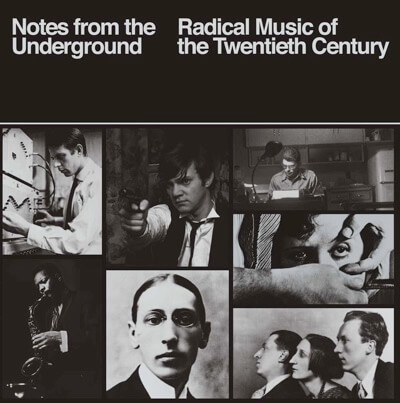
There’s nothing quite like the charge of excitement when a new musical movement starts to get off the ground. It’s easy to forget, though, that revolutionary changes in music have almost always been met with resistance and even outright hostility. On first glance, “dangerous” might not be the first word that comes to mind with the classical, jazz, and experimental sounds on Notes From The Underground, but this 4-CD set allows us to imagine ourselves in times and places where the sensibilities—and the sparks for outrage—were very different from our own. From our current vantage point, it’s hard for us to grasp, for instance, why Stravinsky’s Rite of Spring triggered such a violent response, but that’s precisely what makes Notes From Underground such an important release. After sitting down with these sounds, it makes a more universal kind of sense that older people expressed revulsion towards the music you loved as a teenager. You’ll also walk away with an enriched understanding of the tectonic generational frictions playing out in the here and now. On the other hand, the proto-electronic/musique concrète of Pierre Schaeffer’s Cinq études de bruits (“Five studies of noises”), for example, still sounds revolutionary, dark—and thoroughly irresistible—even by today’s standards. Lovingly curated as a kind of guided tour through a series of flashpoints throughout music history, this set from the ever-reliable Cherry Red label family spotlights boundary-shattering composers Igor Stravinsky, Arnold Schoenberg, Karlheinz Stockhausen and others alongside the likes of John Coltrane, Miles Davis, Ornette Coleman and Bill Evans. Notes From Underground also features music from the Luis Buñuel/Salvador Dalí short film Un Chien Andalou and the British TV show The Prisoner. “Educational” listens don’t always translate well in terms of enjoyability, but the curators have somehow managed to balance challenging work with impeccable flow, not to mention detail-rich liners. —Saby Reyes-Kulkarni
PJ Harvey: B-Sides, Demos & Rarities

Dating all the way back to a limited-edition bonus disc that was issued with her debut album Dry in 1992, PJ Harvey has shown a willingness to augment her albums with full sets of demos. A year later, she released 4-Track Demos, an embryonic take on her breakthrough Rid of Me. And, starting in 2020, she rolled out complete demo versions of eight titles from her catalog. Alas, this 6-LP/3-CD box set does not include all eight of those sets. Nevertheless, there’s plenty for fans to sink their teeth into here. Both Dry and the Steve Albini-produced Rid of Me were characterized by a visceral abrasion that landed fairly close to the feel of demos to begin with. So it’s something of a revelation that her acoustic guitar-based sketch recordings uncover a more tender side to her muse. Depending on your level of fandom, B-Sides, Demos & Rarities either functions as an appetizer for the complete stock of demos, or as a career-spanning document of Harvey’s extraordinary evolution over time. With each album, Harvey’s approach has grown increasingly fleshed-out and sophisticated. B-Sides, Demos & Rarities, which in any case tilts more heavily towards b-sides and rarities over its three hour and fifteen minute runtime, beautifully captures both Harvey’s feral qualities and the depth of her songwriting. Previously unseen photos courtesy of longtime Harvey photographer Maria Mochnacz make for an elegant, unpretentious package.
The Rolling Stones: El Mocambo 1977
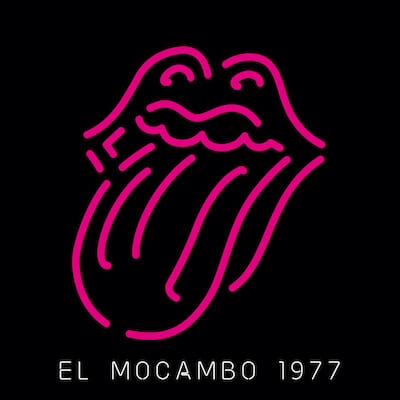
The continued dredging of the Rolling Stones archives has once again uncovered a fascinating artifact. Following the release of Black & Blue, Mick, Keef and the boys decided to dip their toes into a North American tour by playing two somewhat secret shows at Toronto’s El Mocambo, a club that held an estimated 650 people. As always, scandal followed them as Richards was dealing with a drug bust and Mick showed up at the gigs with the estranged wife of Canada’s prime minister. As for the gigs, by all accounts, the first one was awful. But on the next night, the gears locked into place and the Stones ripped that joint apart. This four-LP set is comprised mostly of recordings from that second gig, and it positively smokes. Loosened up by low stakes, the band dips into their bag of old blues and R&B covers (“Route 66,” “Little Red Rooster”), and lays waste to originals from throughout their already stuffed catalog. —Robert Ham
Tom Petty and the Heartbreakers: Live at the Fillmore, 1997
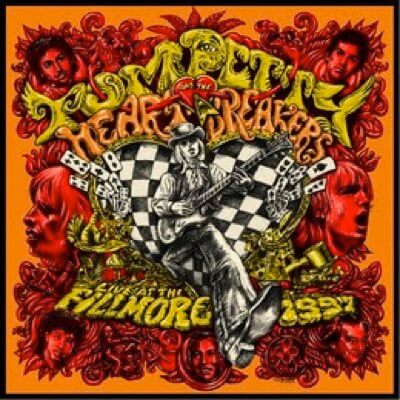
In early 1997, Tom Petty and the Heartbreakers set up shop at the Fillmore in San Francisco for a run of 20 shows that, among fans of the rock group, is still talked about with hushed reverence. The rest of the universe got a chance to grok what the fuss is about courtesy of a four-CD set that pulls together the best moments from the last half dozen of those performances. By that point, the group was at the tightest, yet feeling loose enough to pepper their setlists with covers of their favorite R&B, garage and psych rock tunes (not to mention an instrumental take on Bond theme “Goldfinger”). Adding fuel to their tank were special guests like the Byrds’ Roger McGuinn and blues demigod John Lee Hooker. Set curators Mike Campbell and Ryan Ulyate wisely organized this collection like an epic live set, flooring the gas pedal at the end of disc four with the Heartbreakers’ brash takes on “Louie Louie,” “Satisfaction” and “Johnny B. Goode” before landing softly with the tender original “Alright for Now.” It’s the nearest thing to experiencing the heady rush of being at a truly uplifting live show from the privacy of your earbuds. —Robert Ham
Wilco: Yankee Hotel Foxtrot
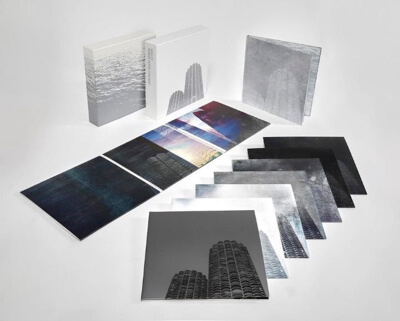
Probably the most important album of indie rock’s second wave received the reissue treatment it so richly deserved this year. Working with producer Jim O’Rourke, Wilco deconstructed itself, letting all manner of sonic bluster and experimental blurts blow through the widening cracks in the folk-pop facade. The band’s former label refused to release the album, leaving Jeff Tweedy and co. to shiver in the wilderness until a different Warner Bros. subsidiary saw the beauty and wonder within Yankee Hotel Foxtrot. Accolades and new fans followed. This deluxe re-release fleshes out that story further with a crucial disc featuring an alternate version of the album that is noisier and stranger than the finished product, an incredible live performance from 2002 and detailed liner notes from Bob Mehr that earned the journalist a second Grammy nomination. —Robert Ham







































